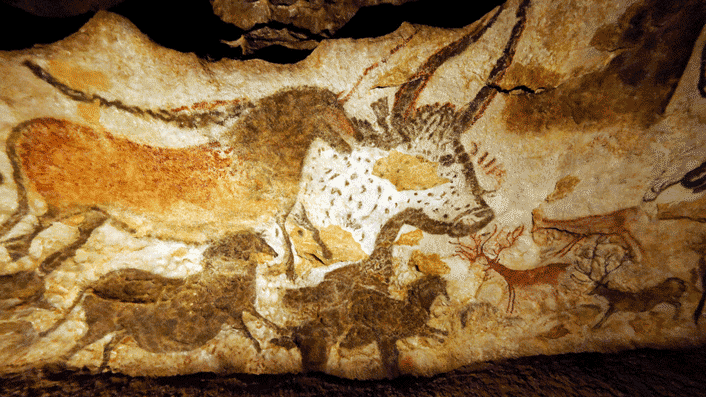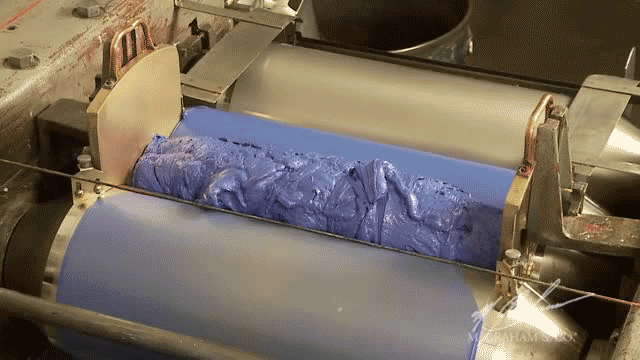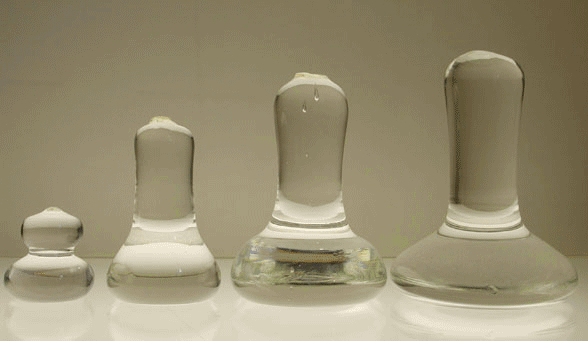Before there was photography, sculpture, or other modern art forms, there was paint. From the Caves of Lascaux to the artist in their studio today, paint has been a staple art supply for tens of thousands of years. The first recorded paints were found in caves dating back over 100,000 years ago, with crudely made paint derived from charcoal and ground ochre. However, the first recorded use of paints came from other Neolithic caves 30,000 to 40,000 years ago. While the materials and methods have changed since their inception, the basic premise of paint making has stayed the same. Paint is made by grinding dyes (natural or synthetic) into a medium to suspend the pigments into a state that can then be used in art.

Artists have been making their own paints for hundreds of years. Historically, these paints were made from plant and mineral based pigments. This process limited the vibrancy and availability of certain colors, with Ultramarine blue, a basic color these days, virtually unavailable until the middle-ages. Around the same time, the change from using egg white as a base to utilizing oil bases allowed for paints to be more durable.
Today, most paints are made commercially in specialized factories using heavy equipment, mainly synthetic pigments being rolled into various bases, such as oil-based, latex-based, or water-based paints. These paints are then extruded and packaged in tubes and sent off to be sold in art supply and hobby stores.

A few years ago, “oddly satisfying” videos became popular online, some of which were large-scale paint mixing videos with large rollers and pastes. Colors would slowly shift from one to another until they were fully mixed. While this method of mixing paint is the norm these days, there is a growing number of people who have found a love for making paints by hand.
This historical technique is called paint mulling, and has found a devoted audience on both YouTube and TikTok. Paint mulling involves very simple tools, a glass plate, a palette knife, and a muller (usually a glass weight with a handle). Once these tools are prepped, the paint mixer will dollop an amount of medium, either oil or water based, and then measure out some pigment. They’ll use a palette knife to do the initial mixing to incorporate the pigment into the medium. Once the paint has reached a paste, the mulling will take place. Mulling the paint helps remove large clumps, and further breaks down the pigments to make a smooth paint.

These videos on TikTok last no more than 30 seconds to a minute, and are often paired with soothing music. However, other videos leave nothing but the raw audio for an audio journey and an extremely visceral, satisfying experience. Many of these accounts are independent artists who make these paints for themselves, but others actually make small batches of custom paints to sell.
While some artists use fairly common pigments, one artist has taken to use ingredients recommended to them by their audience. From powdered raspberries and matcha green tea, to make up and burnt toast, artist Beth Marcehetti pushes the boundaries on what can be made into paint. Of course not all of these experimental paints are light-fast, but they offer an interesting perspective on what does or doesn’t make for a good paint.
Beyond paint mulling, there is also a recent trend in being able to match colors. This particularly important skill for artists takes years to develop and perfect. While paint colors come in a multitude of pre-made hues, being able to create a specific color is key for many realism artists. Similar to the paint mulling videos, these color matching videos are short yet impressive. Artist Chris Breier is a plein-air painter, and frequently does on-the-fly paint matches. His videos are lightly narrated to announce what pre-made colors he is using to adjust his mix. Most of his matches are from the real-world, and are therefore prone to change. Since he can mix his paints on site, Breier captures the moment exactly as it was.
Not only are these videos impressive to watch, they are important on a larger scale. Many kids watch Tik-Tok and YouTube videos, and artists are able to share their knowledge and passion with a wide audience. This new availability of paint mixing education and art will surely empower the next generation of young artists to explore the developing medium.
